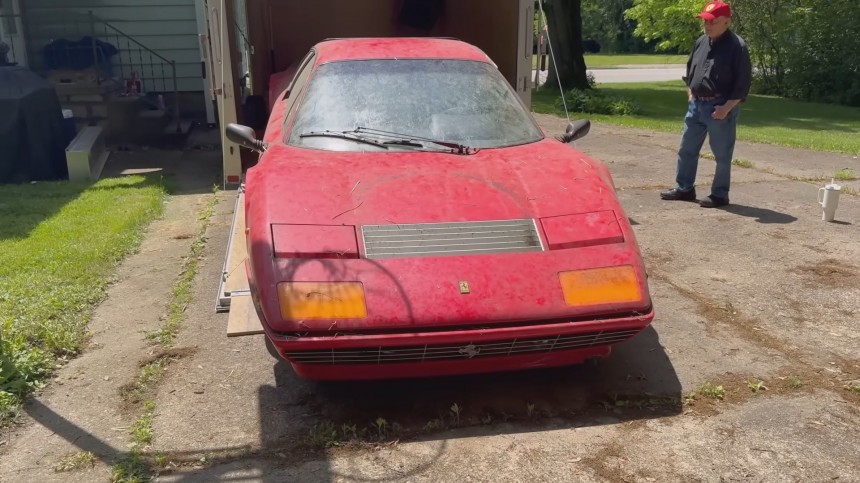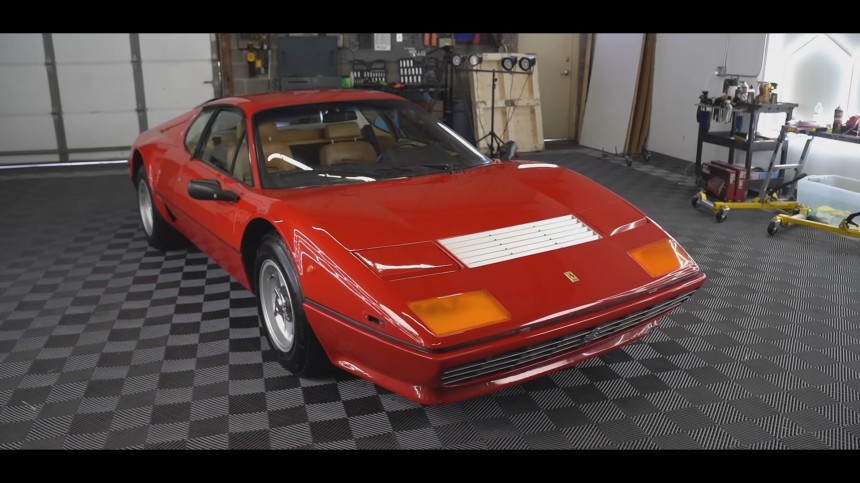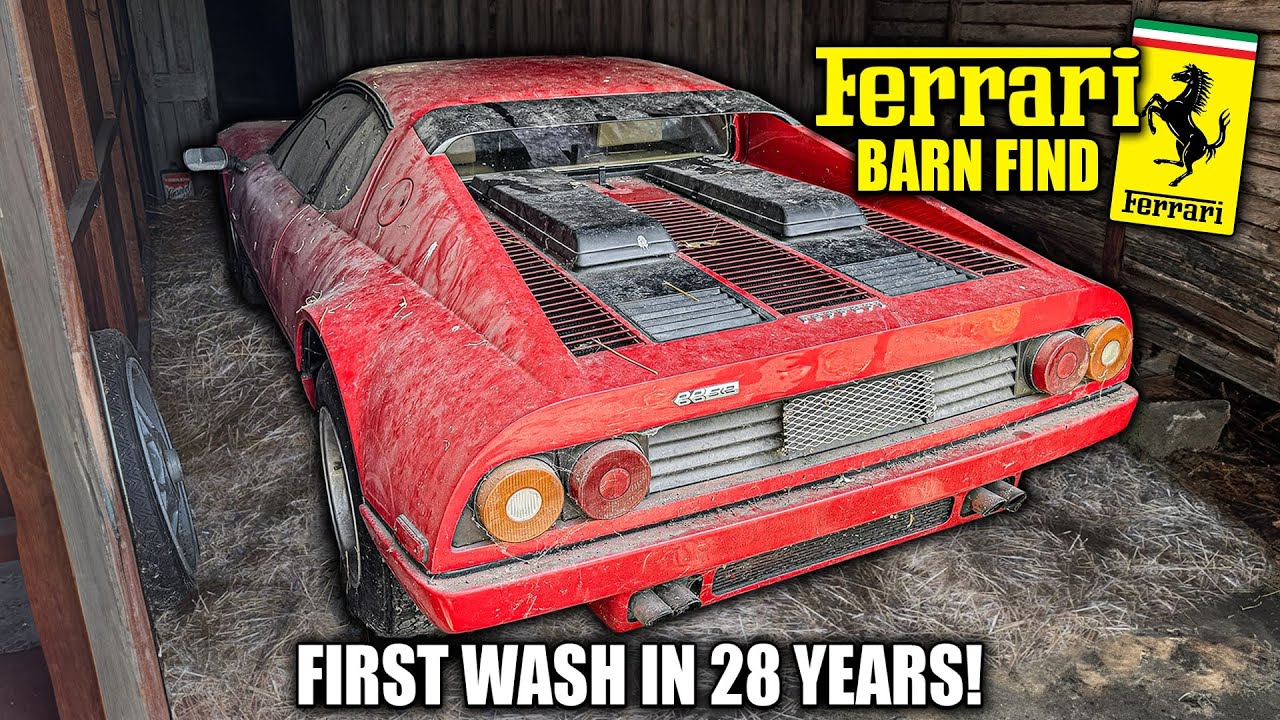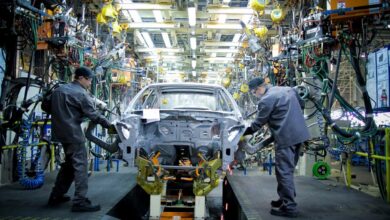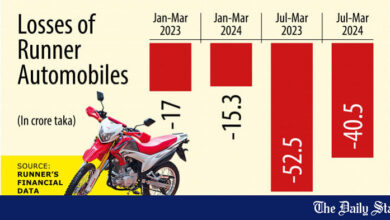Berlinetta Boxer Barn Find: Buys Ferrari in ’95, Drives It a Year, Parks It for 28
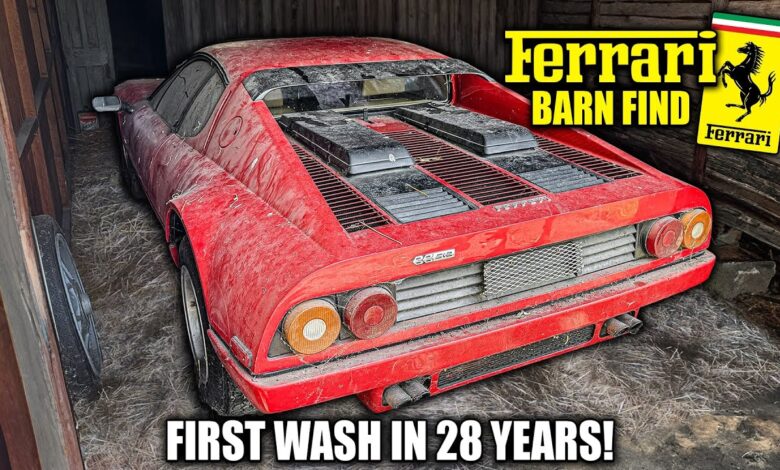
Ed Weaver, from Dalton, Georgia, is a name that might not find a strong echo within the broad car collectors’ society of today, but the name was a definitive trademark back in the 1980s and early 1990s. An affluent carpet businessman, Weaver was also a larger-than-life car nut. At its peak, his absolutely incredible collection consisted of around 400 vehicles.
Speaking of sportscars, the man – who passed away in 1993 at just 48 years of age – was an avid collector of fast machines. Again, small numbers weren’t his thing: six Lamborghini Miuras were, at one point, garaged under the same roof – the carpet seller’s roof, to be precise. Ferrari, Porsches, and even Bugattis happily resided in the man’s custody.
His untimely passing left the collection void of its driving force. In 1995, the cars were sold ‘en masse’ to whoever presented the interest – and finances – for one (or more) of the coveted automobiles. One such dedicated buyer obtained a letter from his bank revealing the limits of his monetary reach, and he bought two Italian gems.
His main target was one of those half-dozen Miuras, and he bought one. Apparently, his bank account was more consistent than just the price of one example from the ‘original supercar,’ so he went ahead and bought another mid-engined twelve-cylinder Italian fun machine. However, it wasn’t another raging Bull icon, but its most ruthless nemesis: a Ferrari.
A 512 BB, to be specific, vintage 1981. The year is important for the car in this story because that’s when Ferrari switched its iconic horizontally opposed motor paradigm. The 512 BB was the final carbureted twelve-cylinder Ferrari, one of the 50 examples built for the 1981 model year. The fuel-injected variant of the powerplant replaced the traditional quarter of triple-choke Weber carburetors.
The gentleman telling the story in the video below is the man who bought a Lamborghini-Ferrari duo from the Ed Weaver collection auction in 1995. He didn’t get to spend too much time behind the wheel of the Prancing Horse and parked it to attend to more important matters – a family with children. The 512 BB sat for the following 28 years – in a garage, thankfully, and not forgotten outside in a field.
Come 2024, and the wait is over, courtesy of the owner’s granddaughter and the team of good detailing Samaritans from WD Detailing. The YouTubers got word about this Ferrari, and the proprietor agreed to trust them for the deep cleaning project.
Amazingly, although vermin infestation plagued this fantastic Ferrari, the interior is not in that bad of a shape. The leather upholstery is dirty, but the mice’s chewing habits did not damage it. Having been protected from the elements, the body is also in pretty good shape, with just minor paint blemishes here and there. One striking feature of this stunning Ferrari is the absence of the famous black paint below its waistline.
The 512 Berlinetta Boxer traditionally came in a two-tone livery, with black covering the lower half. However, it could be ordered in the ‘senza strisce nera’ (literally ‘black stripe delete’ in Italian) single-color hue. Another oddity is the speedometer—it reads a top speed of 320.
This is a key clue that the 512 BB was never manufactured with US specs and was sold only as an imported European variant. Hence, the 320 indicates metric kilometers and not statute miles – the exact conversion between the two would have put a 199-mph mark on the clock.
The odometer shows 31,075 km (19,309 miles); the last time the twelve-cylinder engine ran was in 1996. The powerplant – mounted longitudinally behind the cockpit – is called a boxer, but that’s just poetic license. The flat-twelve is not, technically, a boxer engine, as each pair of opposing pistons share one crankpin and move in the same direction during a power stroke. When one piston is closest to the crankshaft, the other is furthest away.
A true boxer engine has each piston installed on its own con-rod journal, reaching the interior and exterior dead center simultaneously with the piston it opposes. (Since it’s a flat architecture, it wouldn’t be correct in saying ‘Top’ and ‘Bottom’ Dead Center since the two sit in the same horizontal plane and there’s no ‘top’ or ‘bottom’ point to reach).
Mauro Forghieri, the father of the twelve-cylinder horizontally-opposed Ferrari engine, said, ‘Please, don’t call it boxer. Technically, it is correct to say that this engine is a flat-12, or has 12 cylinders with the heads at a vee angle of 180°.’ Call it whatever you want if you’re so engineering-inclined, but the moniker ‘512 BB’ will always be associated with the not-a-boxer-engined Ferrari.
It might have been a fake boxer, but it put out an impressive 355-horse punch from a five-liter naturally-aspirated motor (it was 4,943 CC, so it’s technically 4.9 liters). That’s 360 PS at 6,800 RPM, allowing the dog-leg gated five-speed transmission to push the car to 302 kph (188 mph). It wasn’t a thing back in the seventies and eighties for Ferraris to participate in quarter-mile assemblies, but the manufacturer claims it could get the 440-yard job done in 13.7 seconds.
The cosmetic transformation is downright jaw-dropping, but Ferraris were never renowned for skin-deep qualities. The detailers have cleaned the 180° V12 and its bay. Still, the mechanical restoration is another chapter – and the vloggers hint at the possibility of coming back with this outstanding garage find once it’s up and running (yes, the owner plans to get it fully operational and in driving condition once more).
This car is one of the 929 carburetor-induction examples built between 1976 and 1981; the nameplate endured until 1984 as the 512 BBi, with ‘i’ representing ‘injection’ from the Bosch K-Jetronic fuel system. One thousand-seven examples of the latter series were produced before the model was discontinued in favor of another flat-twelve icon of the eighties, the Testarossa.
